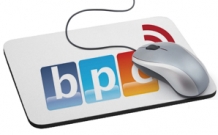As BPC continues to celebrate our year of 30, we thought it might be fun to look at the history of printing in industry, past and future. Because, as they say, you can’t know where you’re going until you know where you’ve been.
Where have we been?
Modern printing as we know it began in the late fifteenth century by a man named Johannes Gutenberg, inventor of the printing press. One of the first publications to be printed on his device was the bible. (Fun fact: nowadays, over 100 million bibles are printed every year!)
In the early 1900s, Ira Washington Rubel invented the first offset printing press. And, while technologies have improved the process, this is still the most commonly used method of printing.
By the 1930s, printing companies pretty much thought they had it figured out. The front half of the twentieth century had been the era of mass media, with magazines such as National Geographic, Life and Time all published to millions of readers. In 1935, Penguin Books began publishing paperback books. And in 1938, Xerography was invented.
As technology improves, so does the printing industry. Each decade has seen enhancements to printing, whether it’s new typefaces, inkjet or laser printing techniques.
So, where do we see printing in 2030?
We predict it’ll be all about 3D printing. Believe it or not, 3D printing began in the 1980s. The first patent for the technology (sterolithography apparatus or SLA) was issued by Charles Hull in 1986. But, it wasn’t until the early 2000s that we saw the first 3D printed kidney and, later, the first 3D printed prosthetic limb.
3D printing is constantly evolving and progressing. The price of 3D printers has fallen in recent years, making it attractive for more and more companies. You can now print jewelry, aircraft and even housing! Imagine the possibilities for your next company giveaway!
In 2030, expect BPC to be at the forefront of 3D printing. From promotional items to branded apparel, the sky will be the limit! We look forward to working with you now and in the (very near) future!
